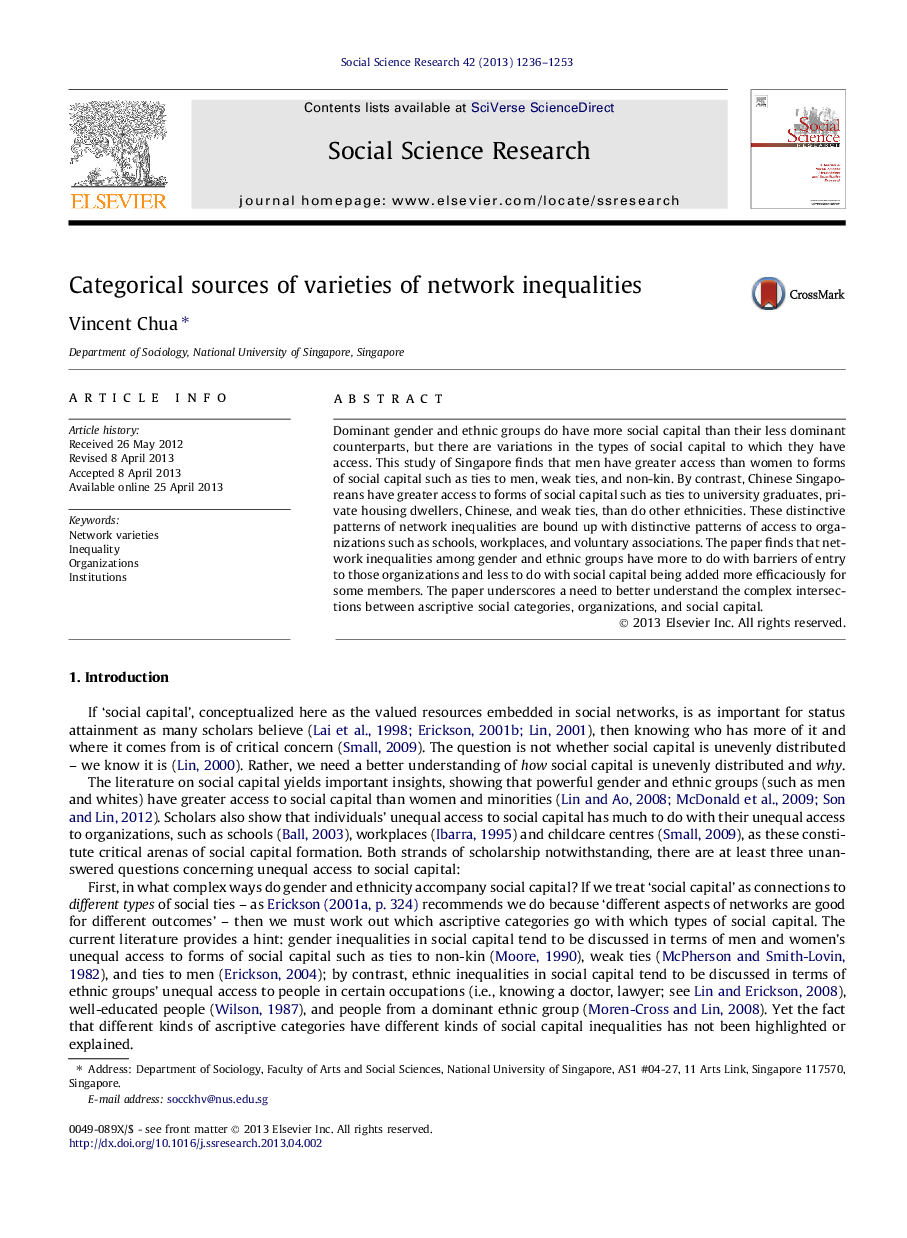| Article ID | Journal | Published Year | Pages | File Type |
|---|---|---|---|---|
| 956047 | Social Science Research | 2013 | 18 Pages |
•There are varieties of social capital instead of a singular social capital.•Gender and ethnicity go with different types of social capital.•Distinctive patterns of access to organizations produce distinctive patterns of access to social capital.•Organizations add social capital more readily for less powerful groups.•‘Intersectionality’ is an important aspect of the study of network inequalities.
Dominant gender and ethnic groups do have more social capital than their less dominant counterparts, but there are variations in the types of social capital to which they have access. This study of Singapore finds that men have greater access than women to forms of social capital such as ties to men, weak ties, and non-kin. By contrast, Chinese Singaporeans have greater access to forms of social capital such as ties to university graduates, private housing dwellers, Chinese, and weak ties, than do other ethnicities. These distinctive patterns of network inequalities are bound up with distinctive patterns of access to organizations such as schools, workplaces, and voluntary associations. The paper finds that network inequalities among gender and ethnic groups have more to do with barriers of entry to those organizations and less to do with social capital being added more efficaciously for some members. The paper underscores a need to better understand the complex intersections between ascriptive social categories, organizations, and social capital.
